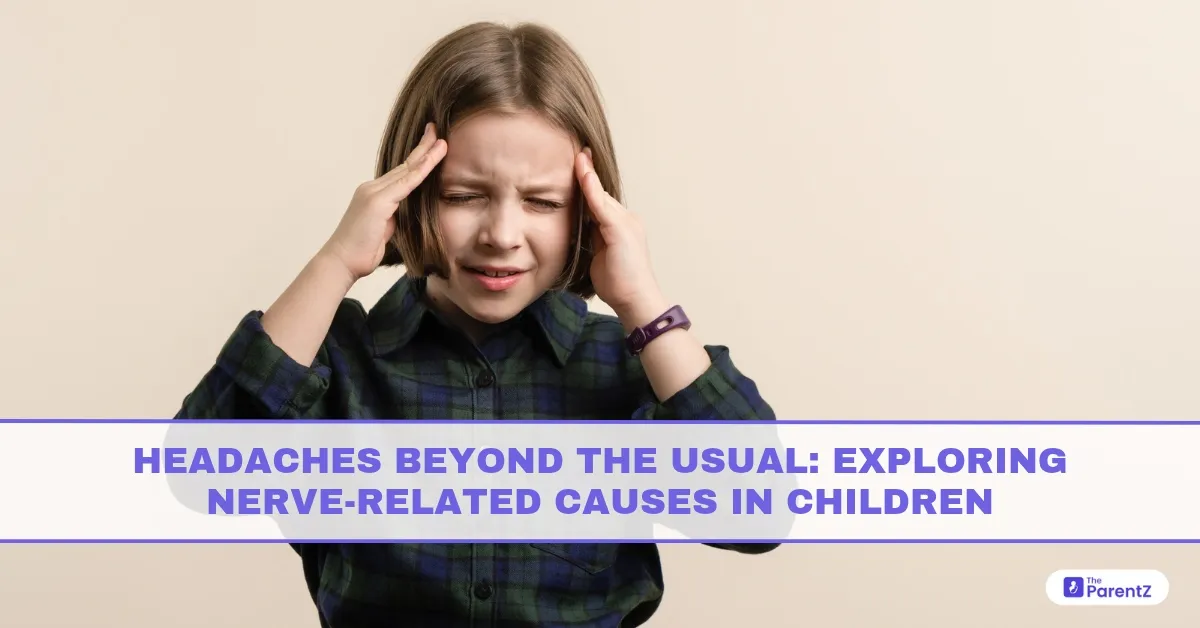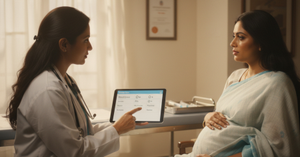Headaches are common in children and are usually attributed to stress, screen time, dehydration, or lack of sleep. However, when a child complains of frequent, sharp, or unexplained headaches, especially if they are one-sided or occur with other unusual symptoms, it may point toward a less common but important category: nerve-related causes.
Understanding these nerve-driven headaches can help parents, caregivers, and healthcare providers recognise early warning signs, seek timely intervention, and support the child effectively.
What Makes a Headache “Nerve-Related”?
Unlike tension or migraine headaches, nerve-related headaches are often caused by irritation or inflammation of specific cranial nerves. These nerves can become compressed, inflamed, or injured, sending abnormal pain signals to the brain. The pain tends to be sharp, stabbing, or electric-like and often affects a specific area of the head or face.
Common Nerve-Related Causes of Headaches in Children
1. Occipital Neuralgia: It is a condition involving irritation or compression of the occipital nerves, which run from the top of the spinal cord into the scalp. It often presents as intense pain at the back of the head, sometimes radiating behind the eyes or ears.
Occipital neuralgia can be mistaken for a migraine or tension headache, but its location and sharp nature often set it apart.
2. Trigeminal Neuralgia: Though rare in children, trigeminal neuralgia affects the trigeminal nerve, which controls sensation in the face. It causes severe, sudden facial pain, usually on one side, triggered by actions like brushing teeth, chewing, or even wind blowing on the face.
Trigeminal nerve issues in children may sometimes be linked to infections, dental problems, or nerve inflammation.
3. Post-Traumatic Neuralgia: If a child has suffered a head or neck injury, they may develop post-traumatic nerve pain. This can lead to chronic headaches, especially if nerves in the scalp or neck were affected.
Early evaluation after a concussion or whiplash is important to detect this type of headache.
4. Chiari Malformation: In this condition, brain tissue extends into the spinal canal, sometimes putting pressure on cranial nerves and the brainstem. This can cause headaches that worsen with coughing, sneezing, or straining.
While rare, Chiari malformation should be considered when headaches come with other neurological symptoms.
How to Recognise If a Child’s Headache Might Be Nerve-Related
Not all headaches require advanced testing, but certain red flags should prompt further evaluation:
- The headache is severe, sharp, or stabbing in nature.
- Pain is consistently one-sided or located in specific nerve areas.
- The child has other neurological symptoms such as facial twitching, numbness, or tingling.
- Headaches are triggered by light touch, wind, or jaw movement.
- The child has a history of head or neck injury.
- Headaches wake the child from sleep or are worse in the morning.
Diagnosis: When to See a Doctor
If a child’s headaches are frequent, severe, or unusual in pattern, it’s important to consult a pediatrician or neurologist. The evaluation may include:
- A detailed medical history and physical exam
- Neurological assessment
- MRI or CT scan to rule out structural issues
- Blood tests to identify inflammation or infection
- Referral to a pediatric neurologist for specialized testing if needed
For nerve-related headaches, specific nerve blocks or diagnostic injections may be used to pinpoint the source of pain.
Treatment Options for Nerve-Related Headaches
Treatment depends on the cause and severity of the nerve involvement. Common approaches include:
- Medications: Anti-inflammatory drugs, nerve pain medications like gabapentin, or migraine-specific treatments may be used.
- Physical Therapy: For issues involving neck posture or tension, physical therapy can relieve pressure on nerves.
- Nerve Blocks: In cases like occipital neuralgia, local anesthetic or steroid injections near the nerve can provide significant relief.
- Lifestyle Changes: Adequate hydration, reduced screen time, improved posture, and good sleep hygiene can prevent headache triggers.
- Surgical Options: Surgery may be needed rarely to relieve pressure on nerves, especially in structural conditions like Chiari malformation.
Emotional and Psychological Impact
Chronic headaches, especially those with unpredictable nerve pain, can take a toll on a child’s mental health. Kids may become anxious, avoid school, or isolate themselves socially. It's important to support their emotional well-being by:
- Validating their pain experience
- Communicating openly about fears or school-related stress
- Involving school counselors or therapists when needed
- Encouraging hobbies and light physical activity when possible
Support groups or counseling for chronic pain in children can also make a big difference.
When Headaches Signal Something More
While most nerve-related headaches are manageable, it's crucial not to delay diagnosis. In rare cases, underlying conditions such as tumors, infections, or autoimmune diseases may affect the nerves in the head or neck. Timely evaluation ensures that these causes are ruled out or treated early.
Conclusion
While headaches in children are often benign, nerve-related causes like occipital or trigeminal neuralgia require closer attention. Recognizing the signs, understanding the different types of nerve pain, and seeking timely medical care can prevent long-term complications and improve your child’s quality of life.
As a parent or caregiver, your observations and advocacy play a key role. Trust your instincts if your child’s headaches feel “beyond the usual,” it’s worth exploring what’s going on beneath the surface.








Be the first one to comment on this story.